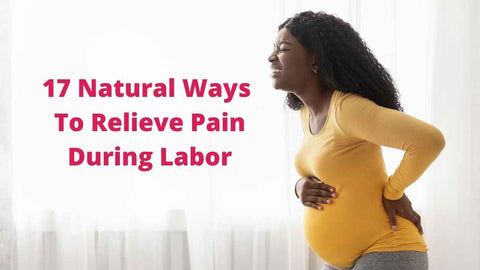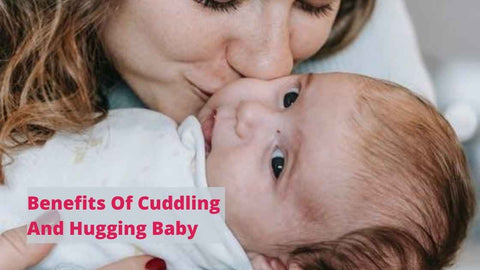Types of Back and Pelvic Pain during Pregnancy
Back pain is a normal part of pregnancy. It can happen to any pregnant woman during her pregnancy. Sometimes back pain says something more. It can indicate that something irregular is going on with you or your growing fetus. If you want to learn more about back pain in pregnancy, you are at the right place. Let's jump in.

Where is Back Pain during Pregnancy?
Back pain in pregnancy mainly targets your lower back and radiates into your buttock, thighs, and legs. Sometimes the pain can feel just like the pain you feel in sciatica. But you can relax! Unlike sciatica, back pain in pregnancy is treatable and can be reduced.
Backaches can get worse with physical activity, improper sleep patterns, or reduced functioning. Once you deliver your baby, these pains tend to go away on their own. If you have a chronic back pain disorder before you get pregnant, then you might need treatment to get rid of it.
Women who are obese or have pre-existing lower back pain conditions are at a higher risk of developing pregnancy back pain. When you are pregnant, any change or pressure to your posture can cause mechanical changes to your body that result in muscle pain.
At the end of the second trimester, back pain and pelvic discomfort are commonly observed. In some cases, this back pain can start as early as 4 to 16 weeks. The following is a list of some of the types of back pain in your lower back and how your body can be affected by them.
Lower back pain in pregnancy
During pregnancy, an instability in your lower back and pelvic area result in pain in your lower back. This back pain can start at any time during pregnancy.
You might experience lower back pain because:
- There is an increase in the reverse c-shaped curvature in the lower spine. This can strain your muscles, discs, joints, and ligaments in the lower back.
- Due to hormonal and physical changes, the muscles that support your spine and help your legs move become strained and can cause back pain.
The following are some of the symptoms of what lower back pain feels like in pregnancy:
- A burning sensation, sharp, or dull ache in your lower back area.
- Pain only on one side of your body. This pain can radiate in either your right or left leg, from your hip to your feet.
- Pain that feels like sciatica. This intense pain starts in your lower back and moves to your legs, thighs, and in some cases to your foot. Sciatica-like symptoms are more common if the pregnant woman has a lumbar herniated disc, spondylolisthesis, facet joint disorders, or muscle sprain or spasm.
- Foot drop. It is a condition in which pregnant women are unable to lift the front part of their foot when they are walking.
A woman who already has back pain, a pre-existing lower back disorder, or multiple pregnancies, is at higher risk of lower back pain in pregnancy.
Women who have physically demanding jobs or jobs that require them to stand or sit for long periods are prone to pregnancy-related back pain.
Pelvic and back pain in pregnancy
In pregnancy, any change in your posture can result in pelvic or back pain. Pelvic changes are also common in pregnancy. These changes occur to accommodate the growing baby in your womb and to get your body ready for labor.

If the amount of laxity in the joints decreased or increased at different rates, a pregnant woman may experience pelvic pain. The joints that are affected are the right and left sacroiliac joints. The main reason for this difference in laxity occurs because the concentration of relaxin in your body differs from place to place. Relaxin is a pregnancy hormone that softens and loses the connective tissues and joints.
If the laxity of the sacroiliac joints stretches the ilium, it can cause its displacement. The Ilium is a part of your pelvis that is attached to the sacroiliac joints. With the ilium shifted to a different position adjacent tissues in your pelvis area become tense.
Your body will naturally try to restore the pelvis to its normal position. This results in your muscles becoming tensed. These tense pelvic floor muscles cause extreme pain in your pelvic area.
Even with a healthy pregnancy, 76% of pregnant women have posterior pelvic and lower back pain. In some cases, this pain may last even after you give birth to your baby. 5% to 8.5% of women have reportedly experienced back pain after their baby is born.
Doctors call this pain pelvic girdle pain or symphysis pubis dysfunction. The following are some of the features of posterior pelvic pain:
You might feel a stabbing, dull, or shooting pain with or without a burning sensation in your lower back and pelvis area.
The pain might extend from your buttock to the groin and the back of your thighs.
A pain that feels like sciatica. It radiates to your legs, thighs, and hips. Unlike sciatica, this pain can be difficult to locate and may change its intensity or location as your pregnancy progresses.
Lower back pain while you are sleeping
Some pregnant women report feeling a sharp pain in their lower back and legs while they are lying down or sleeping. They may also report that this pain gets worst during night time.

The main reason for this night or sleep time back pain is your expanding uterus. It applies pressure on a major blood vessel, the vena cava, resulting in the congestion of the blood vessels in your pelvic area and lower back.
Back and hip pain in pregnancy
During pregnancy, your body undergoes several changes. Changes in your lower back and pelvis result in more painful and sore hip muscles. As different parts of the hips are affected, it can result in several potential disorders.
Here is a list of some of these potential disorders:
Transient osteoporosis
Transient Osteoporosis is a rare condition that occurs in the third trimester. The growing weight of the baby and mother causes this disorder. The weight from mother and baby can weaken the hip bone and hip muscles that results in pain while moving.
The pain in transient osteoporosis rapidly increases when a pregnant woman lifts heavy objects while standing or walking. You can minimize this pain by taking shorter steps and avoid lifting heavy objects.
Avascular necrosis
Avascular necrosis of the femoral head is another condition that can be found in pregnant women. In pregnancy, the body of the woman goes through certain changes. These biological changes result in high levels of natural steroids which include estrogen and progesterone hormone.
The hormonal changes and increased weight can result in additional pressure on the joints and muscle strains in the hip. In severe conditions, due to lack of enough blood supply, avascular necrosis can destroy the bone tissues in the upper part of your thigh bone.
If you have avascular necrosis, you'll experience the following symptoms in your third trimester:
- Intense and deep pain in your inner thigh
- The pain radiates to the lower back, thigh, or knee.
You can experience these symptoms and feel them more clearly while you are standing or walking.
Lower back and abdominal pain with cramps
If you are feeling severe abdominal pain with cramps it may indicate a ruptured ectopic pregnancy. An ectopic pregnancy is a common condition in which the egg gets fertilized and started growing somewhere else other than the uterus. Most commonly the egg gets fertilized in the fallopian tube that ruptures due to the growing fertilized egg.
If you have a ruptured ectopic pregnancy, your body will show symptoms like severe lower back pain and deep pain in the inner thighs. If you feel anything wrong, you should IMMEDIATELY contact your healthcare provider. A ruptured ectopic pregnancy requires immediate medical care.

Braxton Hicks contractions or labor pain?
Braxton Hicks contractions can feel like labor pain. This pain comes and goes on its own. The main difference between this and labor pain is that labor pain comes with regular intervals and the pain gets more intense with time. But, Braxton Hicks contractions start very early in the third trimester and are not that painful.
Pain that you feel in active labor is the result of the contraction of the muscles in the uterus. In the beginning, they might feel like period cramps and increase their intensity. Some women feel severe lower back pain during labor that gets sharper between contractions.
If your baby is not in a good position, for example it's head presses against the mother’s back, then back pain might occur during labor.
Final Thoughts
Back pain that starts during pregnancy usually resolves after delivery. If your pain is not getting better with time, you should contact your doctor for treatment.



